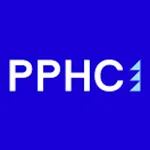Part one of this column was an introduction to prosperity planning. Part two discusses some specific areas that must be addressed. The number one item on your list is to reach a target profitability of 25 percent or more. If you are at the 25 percent mark, make your target 35 percent.
Planning and budgeting is key. You must set goals and have a vision of where you want to end up.
Tony Robbins once said it is crucial to write down your goals. He said if you don’t know where you are going, how will you know when you get there?
How To Guarantee Low Profitability
Guaranteeing low profitability is a direct result of not managing your engagements properly or you just do not know how to price an engagement. Any of these can result in always operating in crisis mode. (I beleive crisis mode tops lack of knowledge.)
Fear of losing a client is next. Fear leads to over servicing in my view. If it is not fear, please write back to me and let me know why you over service at your agency. If enough of you do this I will publish the results.
Think about the last time you hired a contractor to work on your home. You came to a price and the contractor started work. An unforeseen event arose that required the contractor to make a change or do the job differently or you wanted a plan modification. Did the contractor over service you? Or did you learn the two words “Change Order?”
I find smaller (less than $2.0 million) agencies generally have lower profitability for the reasons mentioned above. When I meet an agency that seems to have profitability issues, I look at three basics factors (similar to a doctor performing a basic examination).
The first test is the revenue per professional test. I generally multiply the total full time professionals by $200,000. I would expect to see a $2.0 million agency have ten professionals. You can use $175,000 if you like. We are still playing in the same ball park! (See my prior column on this subject.)
The next test is to divide revenue by billable hours. Smaller agencies are hard pressed to tell me how many billable hours are generated. I usually use on average 1,500 hours per professional or some other number that agency management feels is appropriate.
In the example just mentioned, I would like to see an average billing rate of $185. If this is the case, the revenue for the agency should be $2.7 million not $2.0. The problem comes into play when the number is $85 per hour. I will tell you all, this result is not uncommon.
Labor costs is next on the list. According to the SGP best practices report, this percentage should be in the 55 percent range on average or lower.
It has been my experience that agencies with cash flow and profitability issues benchmark at 70 percent to 80 percent. Again, according to the SGP benchmarking report, operating expenses and overhead average about 26 percent. Therefore, if labor is 70 percent and operating costs are 26 percent, the result is poor profitability, and stress. Again, the culprits can usually be traced back to poor account management and/or over servicing.
The Al Croft Keys to Profitability
As many of you know, we recently lost one of the best PR agency consultants and the publisher of Management Strategies for Public Relations Firms, Al Croft. A real loss to the PR profession!
Some of his “keys” are:
Positioning. Assuming you have or will develop a business plan, consider developing a marketing niche or strategic position for your agency. Describe what your agency is; what you want to be; the kind of clients you want; and what markets you currently serve and those that offer opportunities.
Analyze current capabilities and those you will need to move into new markets. Delineate strengths and corporate culture, the things that make your agency unique and memorable. Explore steps you can take to ensure that clients and prospects perceive your agency is in step with reality. Sounds like some Tony Robbins advice?
Productivity. A problem often experienced by small and mid-sized firms is low productivity (see above). This is usually a result of a lower than 85% staff utilization. High productivity (not over servicing) depends on attracting and maintaining excellent staff that have high values and morals, and an environment that motivates staff by building intellectual capital.
Money alone will not do it. Cash is the goal at the end of the day. However, you cannot get it without great staff. Staff is one of your most important, if not the most important, assets you have. If you cannot build your staff’s intellectual capital, they will move on! Your employees need to be recognized for and be proud of their success. They need to develop a strong sense of their own self-worth.
It is agency management’s responsibility to educate employees about the agency’s work load and to train them to balance and manage their own productivity by getting help in handling peak loads or asking for additional work when their own load is about to drop off.
A high level of staff interdependence is essential to overall high productivity. Allow staff that is not busy to work on other projects. In this case, do not worry about the hours they will spend. The projects may be completed ahead of schedule which is great for client expectations.
You may just increase staff intellectual capital by doing this that has the potential to increase your bottom line.


 WPP reported a 5.5 percent decline in Q1 PR revenues to $292M as its BCW and Hill & Knowlton units suffered the loss of Pfizer assignments, and cutbacks in client spending due to the economic uncertainty.
WPP reported a 5.5 percent decline in Q1 PR revenues to $292M as its BCW and Hill & Knowlton units suffered the loss of Pfizer assignments, and cutbacks in client spending due to the economic uncertainty. Interpublic CEO Philippe Krakowsky said the firm is off to a “solid start to the year” as its flat $2.2B net revenues are in line with 2024 financial targets.
Interpublic CEO Philippe Krakowsky said the firm is off to a “solid start to the year” as its flat $2.2B net revenues are in line with 2024 financial targets. Why financial planning always plays a crucial role in every PR firm’s success.
Why financial planning always plays a crucial role in every PR firm’s success. Omnicom CEO John Wren reports Q1 revenues jumped 5.4 percent to $3.6M, powered by a solid 7.0 percent rise in its advertising & media segment.
Omnicom CEO John Wren reports Q1 revenues jumped 5.4 percent to $3.6M, powered by a solid 7.0 percent rise in its advertising & media segment. Public Policy Holding Company registered 24.1 percent growth to a record $135M during the past year, which included the results of the March 1 acquisition of Multistate Assocs.
Public Policy Holding Company registered 24.1 percent growth to a record $135M during the past year, which included the results of the March 1 acquisition of Multistate Assocs.


 Have a comment? Send it to
Have a comment? Send it to 
No comments have been submitted for this story yet.